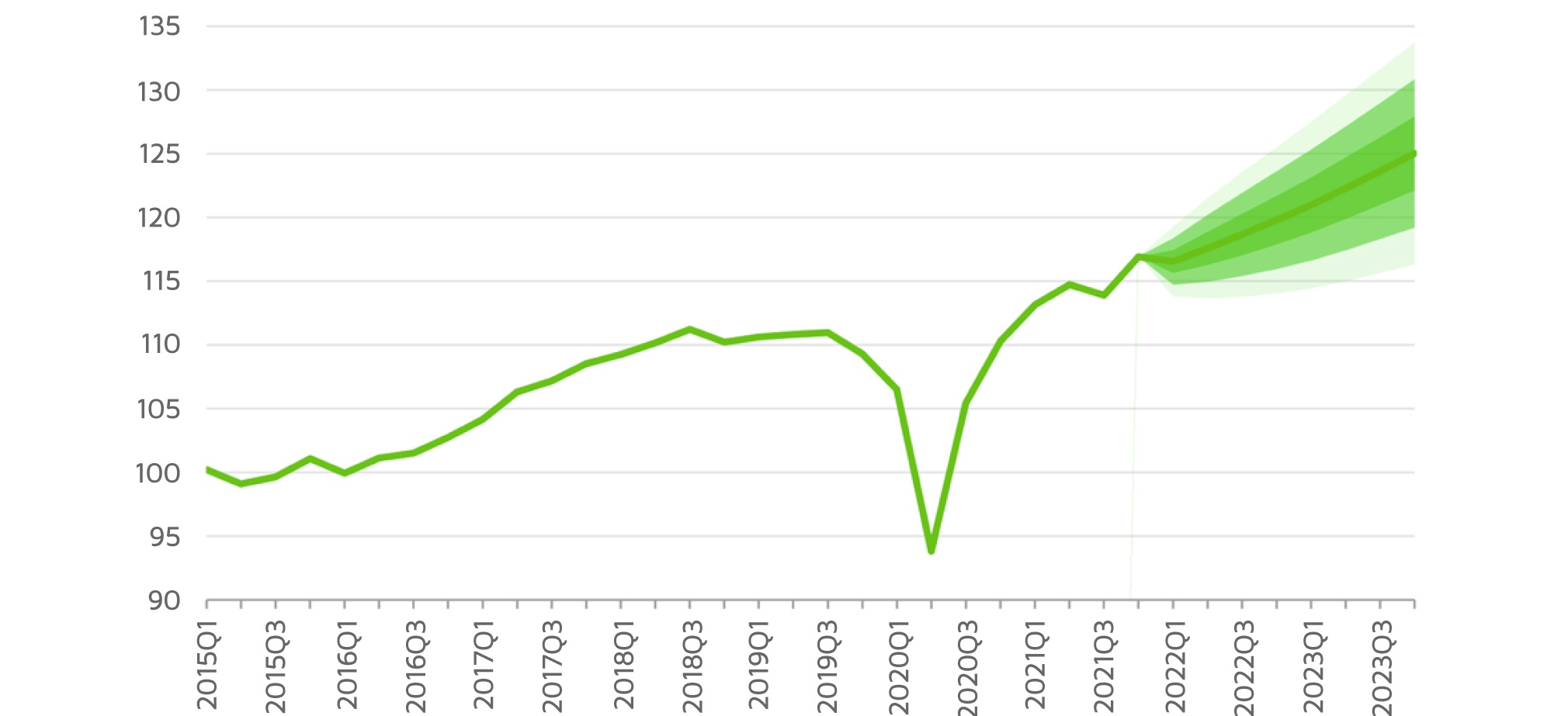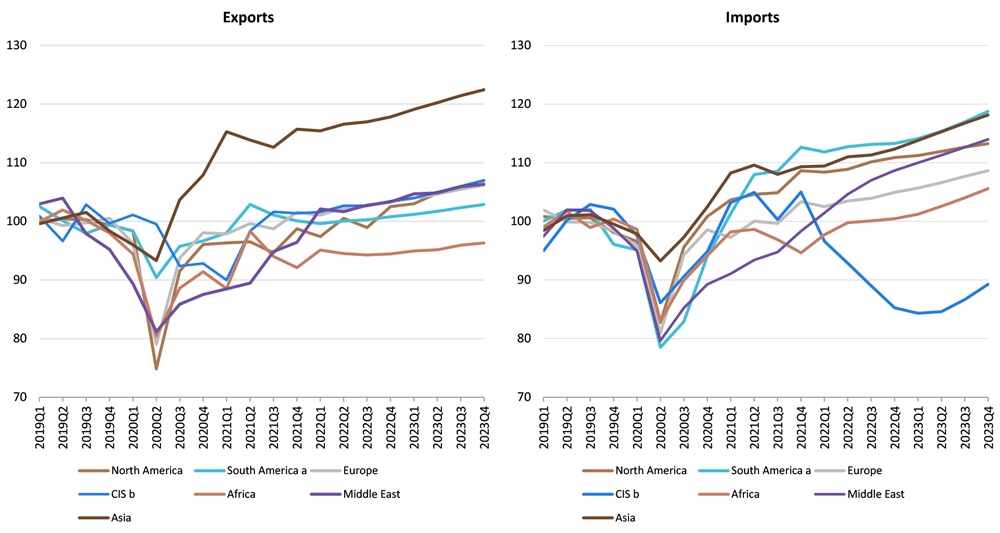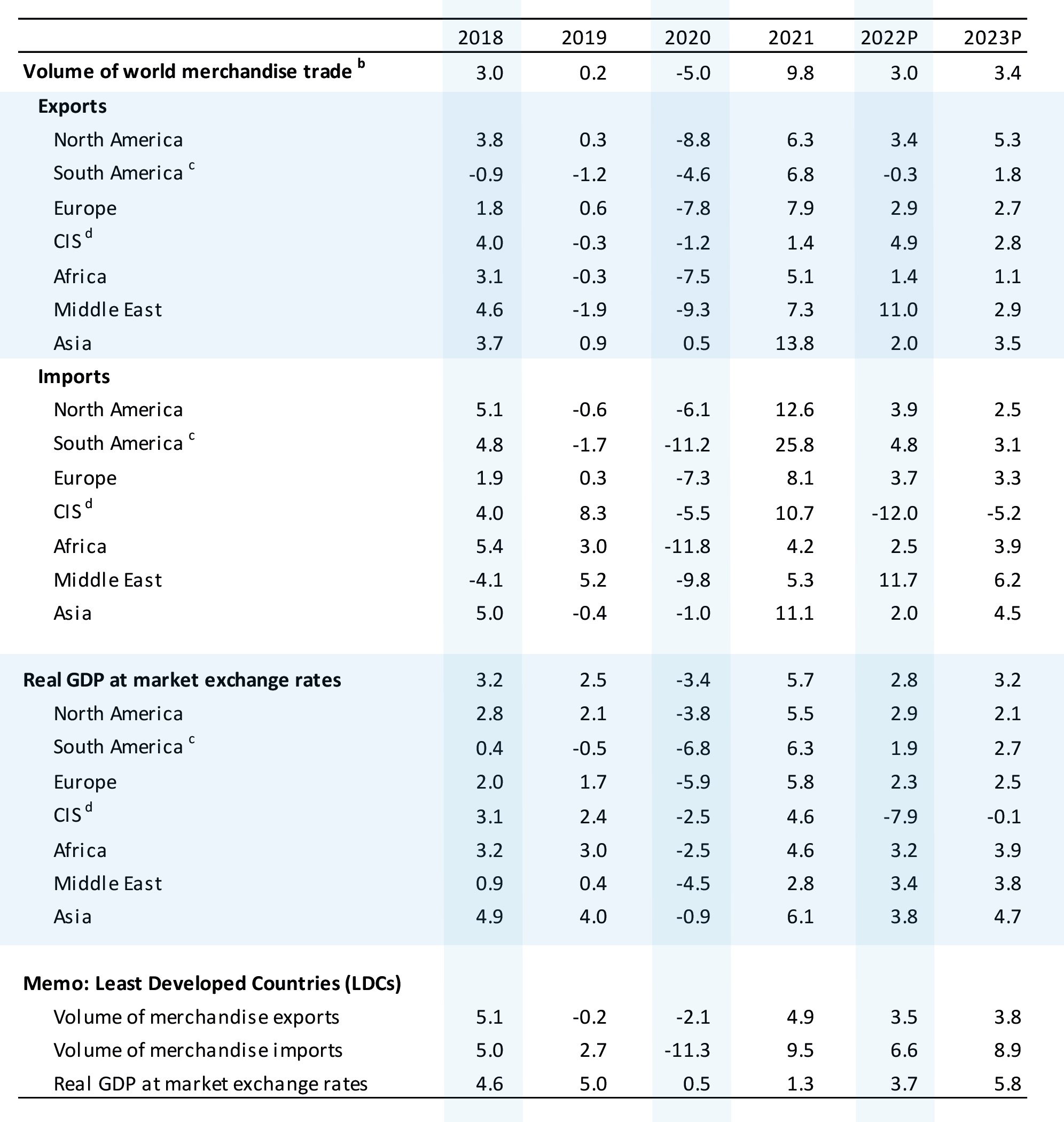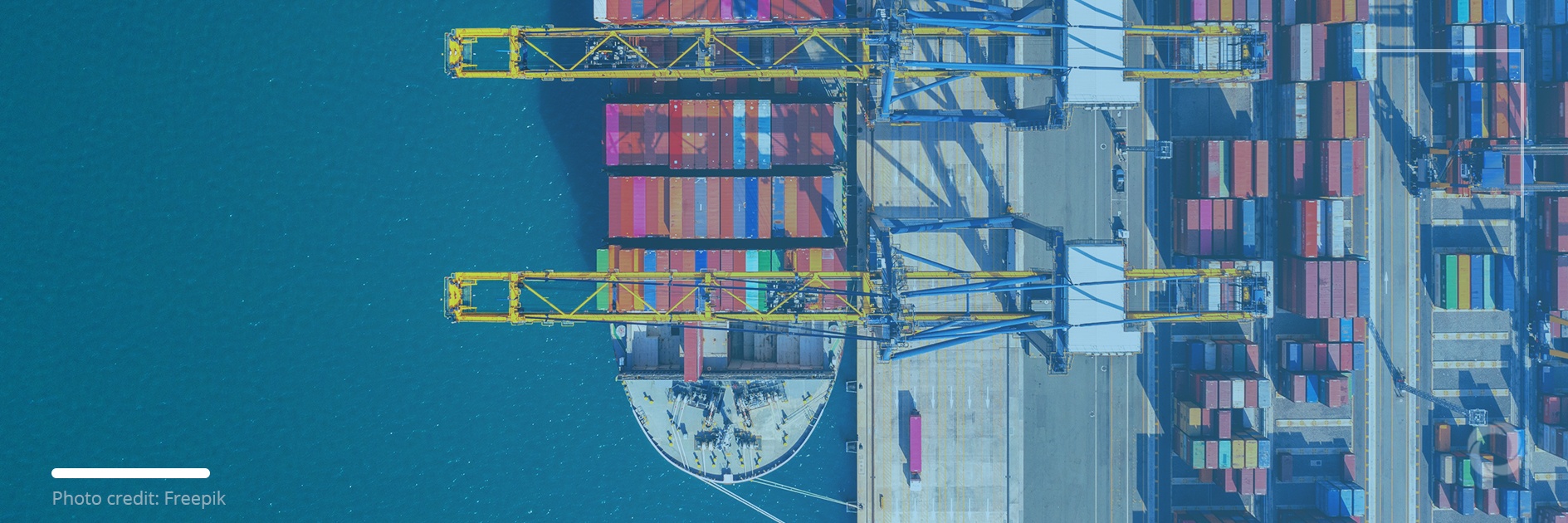The World Trade Organization (WTO) has recently published alarming figures, warning that the war in Ukraine threatens to damage already fragile international trade. According to the agency, world merchandise trade volume is now set to be far lower than was predicted while almost all regions in the world are expected to record lower levels of import and export growth rates in 2022.
While COVID-19 has significantly damaged international trade routes because of the border closures around the world, the war that Russia has unleashed against Ukraine threatens to further exacerbate already fragile global trade. According to the WTO, world merchandise trade volume was forecast to increase by 4.7% in 2022 but, amid the war in Ukraine, this has been downgraded to 3%. In 2023, the volume is expected to grow by 3.4% although these figures may change subject to developments around the conflict.
WTO Director-General Ngozi Okonjo-Iweala commenting on the figures, noted: “The war in Ukraine has created immense human suffering, but it has also damaged the global economy at a critical juncture. Its impact will be felt around the world, particularly in low-income countries, where food accounts for a large fraction of household spending.” He went on to say, “Smaller supplies and higher prices for food mean that the world’s poor could be forced to do without. This must not be allowed to happen. This is not the time to turn inward. In a crisis, more trade is needed to ensure stable, equitable access to necessities. Restricting trade will threaten the wellbeing of families and businesses and make more fraught the task of building a durable economic recovery from COVID‑19.”
Fig.1.Economic Fallout – War in Ukraine puts fragile global trade recovery at risk
Source: Bloomberg
At the same time, while global GDP at market exchange rates increased in 2021 by 5.7%, in 2022 the rise is set to be 2.8% which represents 1.3 percentage points less than the previous forecast of 4.1%. In 2023, the growth is expected to reach 3.2% which is close to the average between 2010 and 2019. In addition, the WTO predicts that based on current growth projections, merchandise trade volume growth in 2022 could decrease reaching 0.5% or increase up to 5.5%.
Fig.2. Volume of world merchandise trade, 2015Q1-2023Q4

Source: WTO
Furthermore, the WTO predicts that in 2022 the CIS region (excluding Ukraine) will likely experience a 12% drop in imports and a 7.9% decline in GDP. At the same time, exports are expected to surge by 4.9%, taking into account the fact that countries still rely on energy supplied by Russia. The trade of services will also be affected by the war, putting at risk the transport sector which includes container shipping and passenger air transport.
The agency also noted that the sanctions against Russia are expected to affect commercial services:
“Prior to the pandemic, travel/tourism and air transport services were the largest traded services by Russia, accounting for 46% of its exports and 36% of its imports. These services, already hit hard by the pandemic, may be heavily affected by economic sanctions.”
Fig.3. Merchandise exports and imports by region, 2019Q1-2023Q4

Source: WTO
As for export rates, the WTO predicts lower export growth for almost all regions except CIS and the Middle East. For instance, while in 2021 North America recorded a 6.3% increase in exports, in 2022 the figure is expected to be 3.4%. Similarly, the export growth rate in Europe is predicted to be 2.9% in 2022 compared to 7.9% in 2021.
Fig.4. Merchandise trade volume and real GDP, 2018-2023 (Annual % change)

Source: WTO

